Tatsuji Fuse
(布施辰治, 1879~1953)

Do you know the Japanese lawyer referred to as ‘our lawyer’ by Koreans during the Independence Movement Period against Japan?
This lawyer is Tatsuji Fuse(1879~1953).

Tatsuji Fuse was born in Osaka Miyagi, Japan in 1879.
He studied at the Meiji University School of Law from 1899 and became a lawyer in 1903.
He was greatly interested in social issues including Japan’s invasion of Joseon.
In 1911, he was even investigated by Japan for writing 『Paying My Respects to Joseon’s (Korea’s) Independence Movement』.
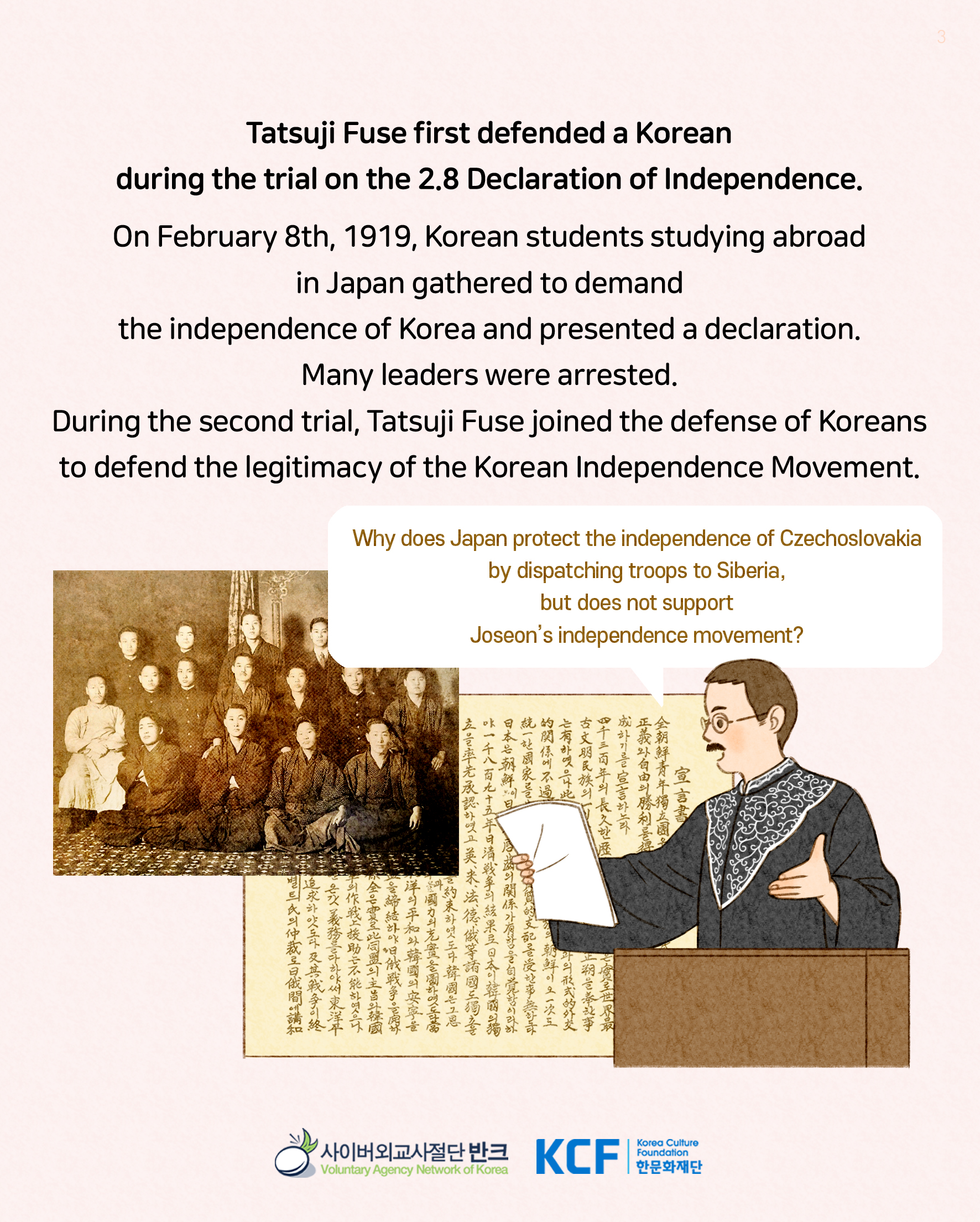
Tatsuji Fuse first defended a Korean during the trial on the 2.8 Declaration of Independence.
On February 8th, 1919, Korean students studying abroad in Japan gathered to demand the independence of Korea and presented a declaration. Many leaders were arrested. During the second trial, Tatsuji Fuse joined the defense of Koreans to defend the legitimacy of the Korean Independence Movement.
Why does Japan protect the independence of Czechoslovakia by dispatching troops to Siberia, but does not support Joseon’s independence movement?

He defended independence activists Park Yeol and Fumiko Kaneko.
On September 1st, 1923, a massacre occurred in the midst of the Great Kanto earthquake. The Japanese army, police, and vigilantes massacred around 6,000 Koreans and arrested 6,000 by random search.
This included independence activists Park Yeol and Fumiko Kaneko, and other 16 Bulryeongsa members.
*An extra edition of The Osaka Asahi Shimbun that reported the Park Yeol incident
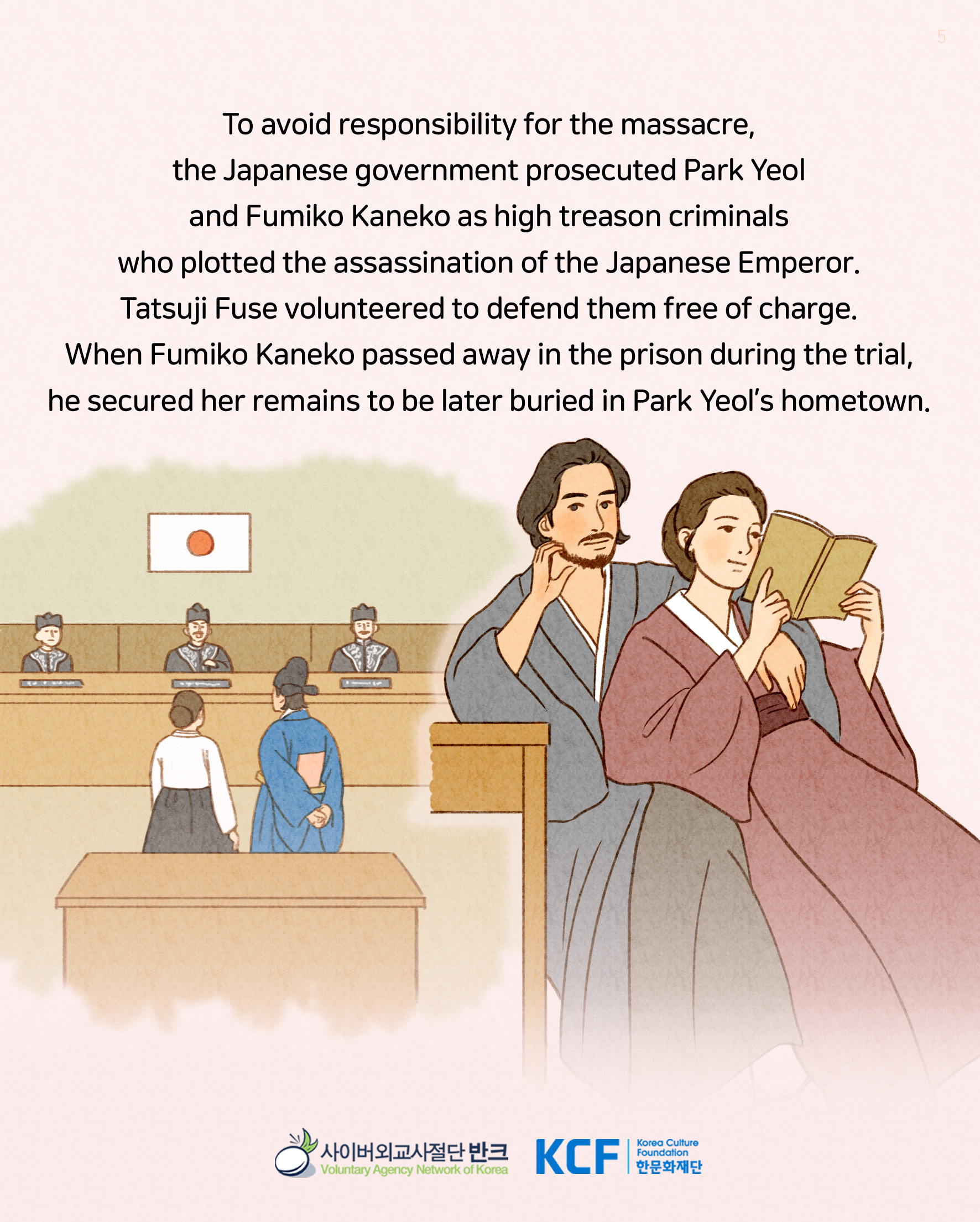
To avoid responsibility for the massacre, the Japanese government prosecuted Park Yeol and Fumiko Kaneko as high treason criminals who plotted the assassination of the Japanese Emperor. Tatsuji Fuse volunteered to defend them free of charge. When Fumiko Kaneko passed away in the prison during the trial, he secured her remains to be later buried in Park Yeol’s hometown.
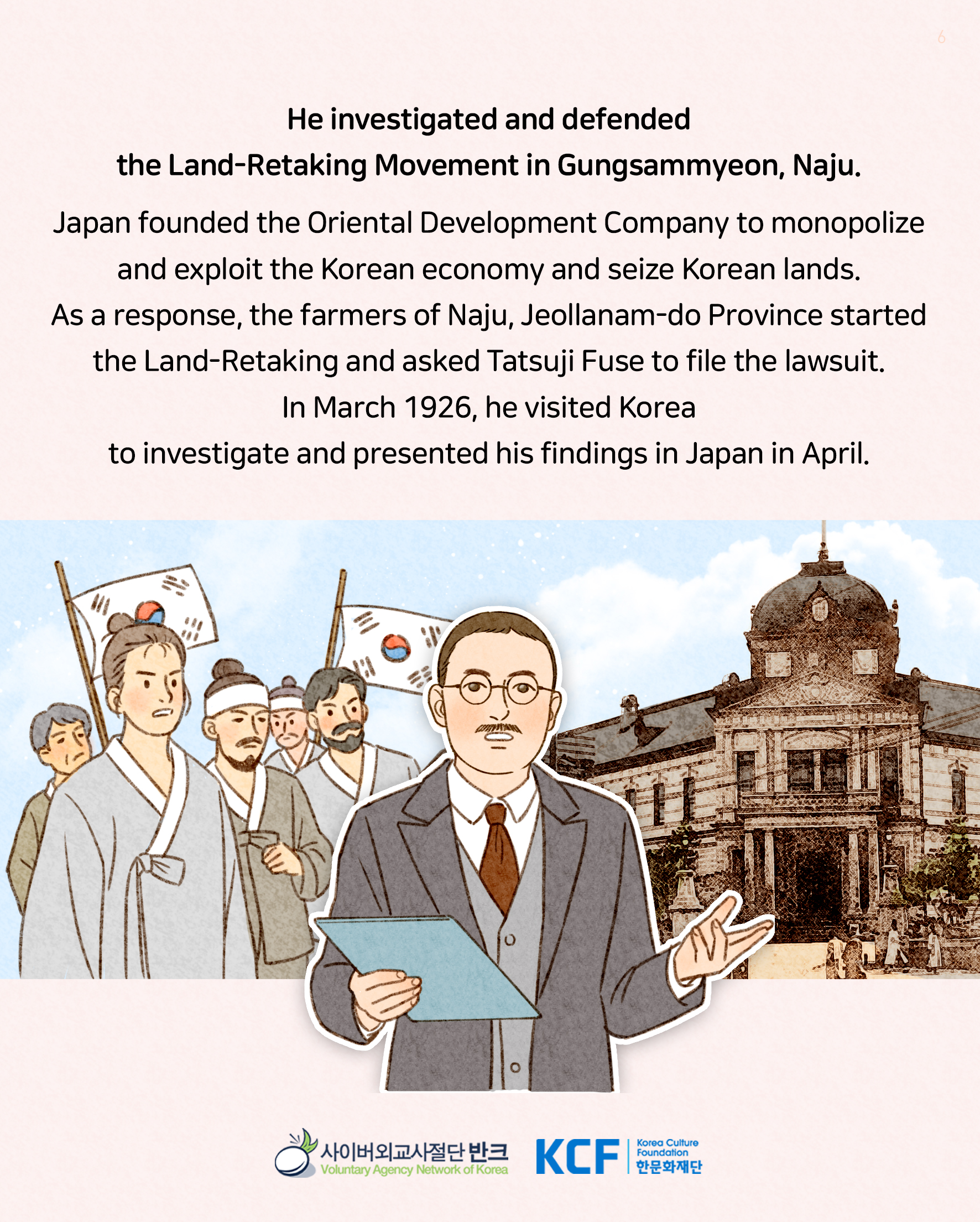
He investigated and defended the Land-Retaking Movement in Gungsammyeon, Naju.
Japan founded the Oriental Development Company to monopolize and exploit the Korean economy and seize Korean lands. As a response, the farmers of Naju, Jeollanam-do Province started the Land-Retaking and asked Tatsuji Fuse to file the lawsuit.
In March 1926, he visited Korea to investigate and presented his findings in Japan in April.
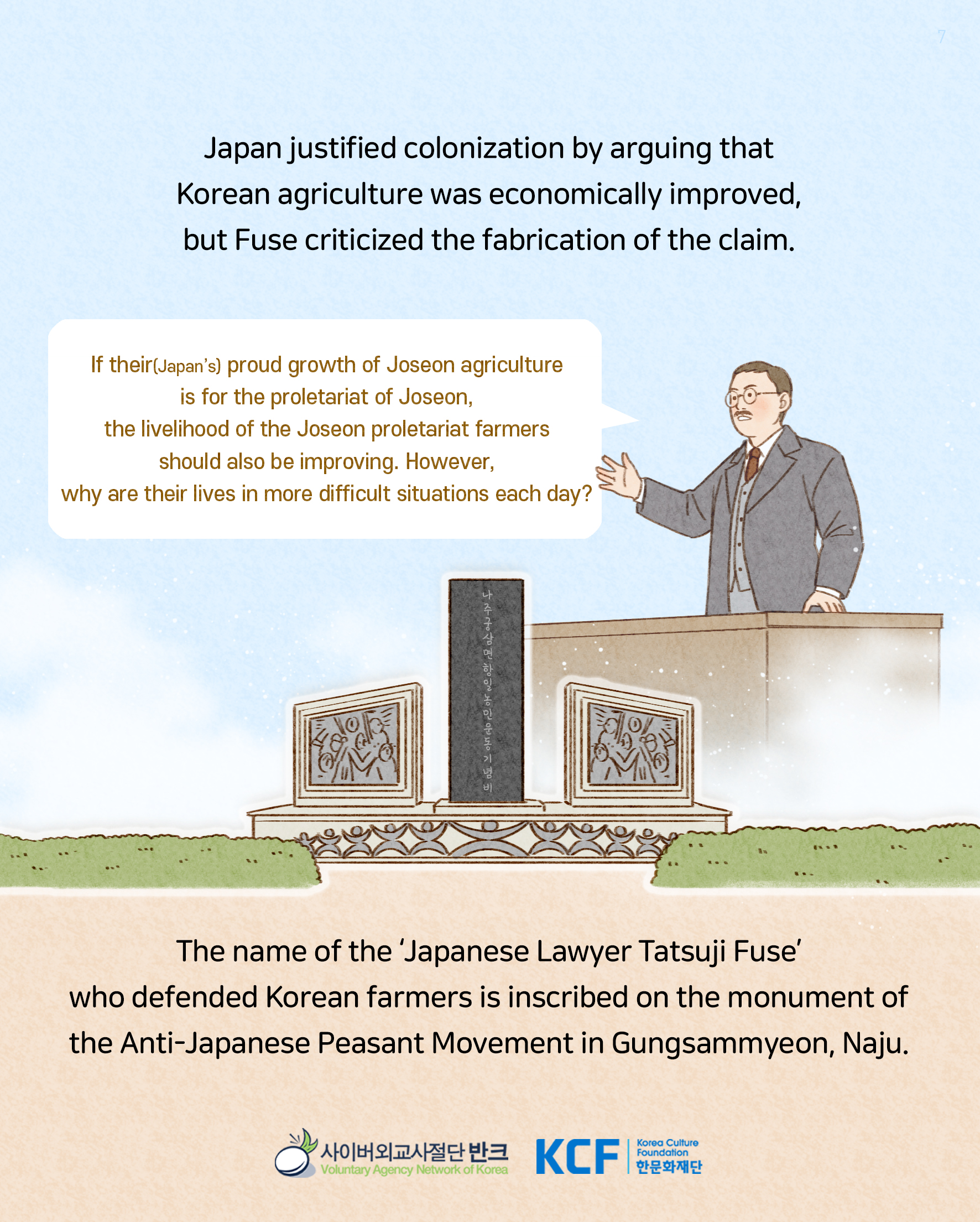
Japan justified colonization by arguing that Korean agriculture was economically improved, but Fuse criticized the fabrication of the claim.
“If their(Japan’s) proud growth of Joseon agriculture is for the proletariat of Joseon, the livelihood of the Joseon proletariat farmers should also be improving. However, why are their lives in more difficult situations each day?”
The name of the ‘Japanese Lawyer Tatsuji Fuse’ who defended Korean farmers is inscribed on the monument of the Anti-Japanese Peasant Movement in Gungsammyeon, Naju.
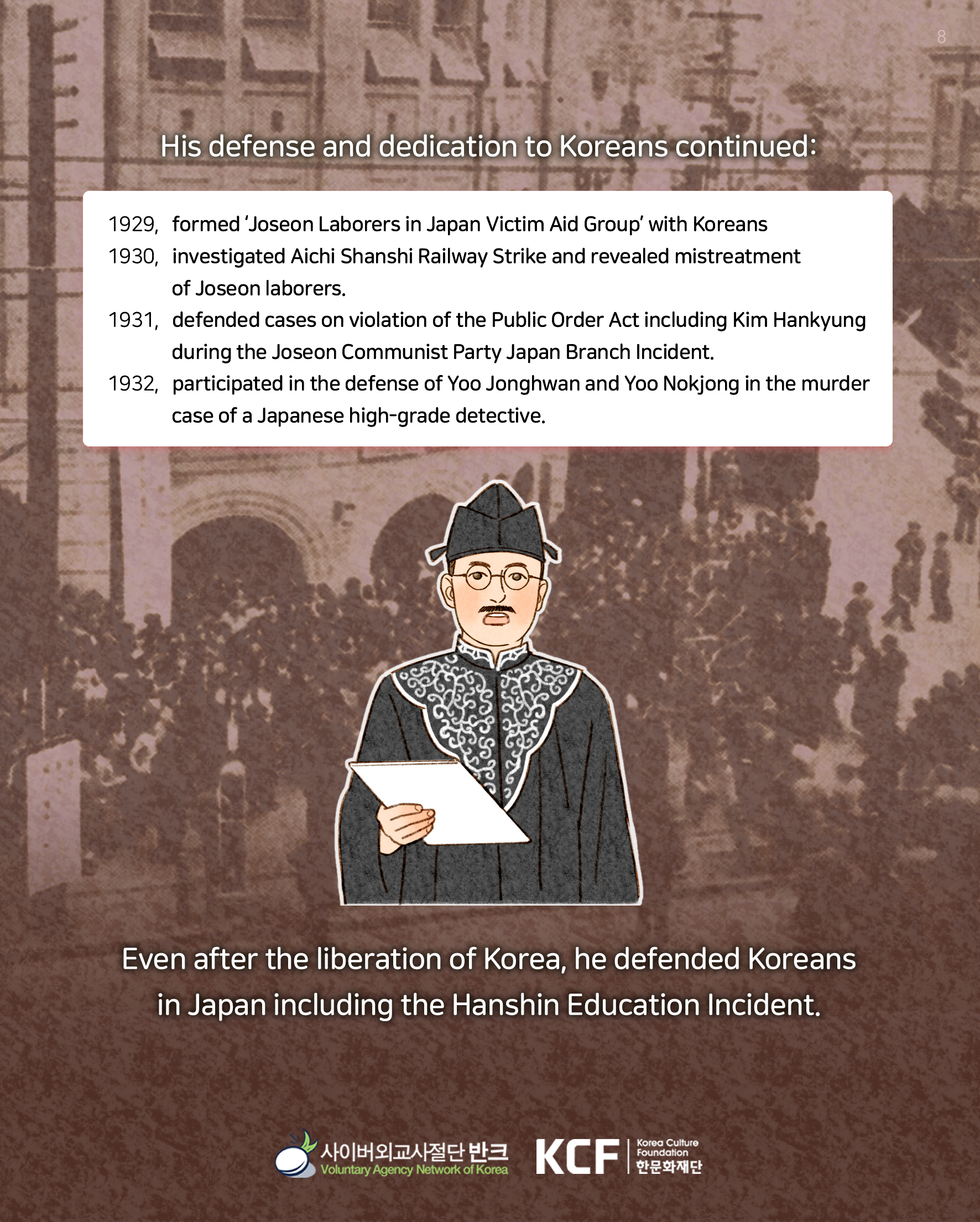
His defense and dedication to Koreans continued:
-1929, formed ‘Joseon Laborers in Japan Victim Aid Group’ with Koreans
-1930, investigated Aichi Shanshi Railway Strike and revealed mistreatment of Joseon laborers.
-1931, defended cases on violation of the Public Order Act including Kim Hankyung during the Joseon Communist Party Japan Branch Incident.
-1932, participated in the defense of Yoo Jonghwan and Yoo Nokjong in the murder case of a Japanese high-grade detective.
Even after the liberation of Korea, he defended Koreans in Japan including the Hanshin Education Incident.
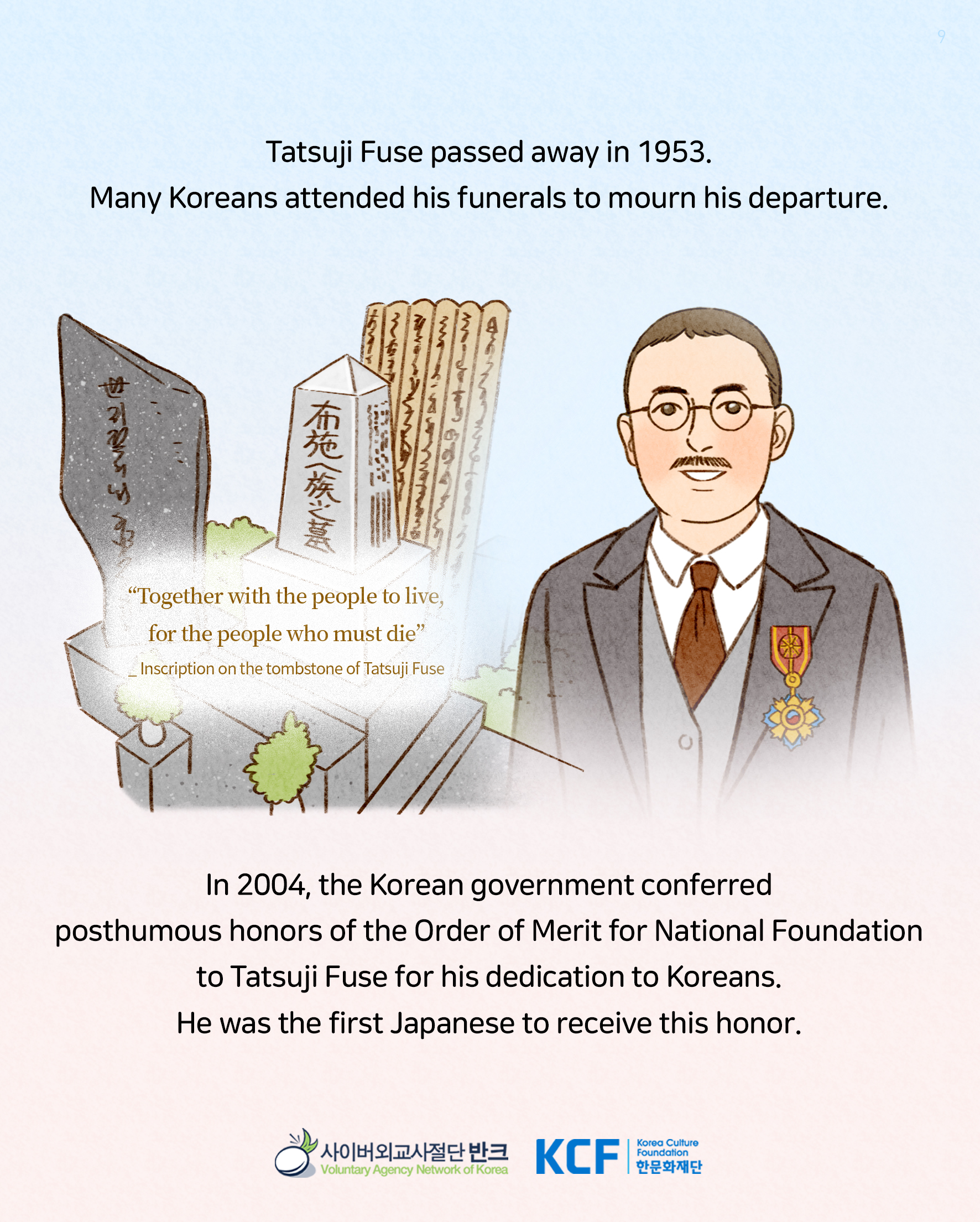
Tatsuji Fuse passed away in 1953. Many Koreans attended his funerals to mourn his departure.
“Together with the people to live, for the people who must die” -Inscription on the tombstone of Tatsuji Fuse
In 2004, the Korean government conferred posthumous honors of the Order of Merit for National Foundation to Tatsuji Fuse for his dedication to Koreans. He was the first Japanese to receive this honor.

Tatsuji Fuse, who dedicated his life to the freedom, equality, and rights of Koreans, is the true ‘Friend of Korea’!
Let’s carry on the dream of Tatsuji Fuse by promoting Korea to the world and changing the global society.